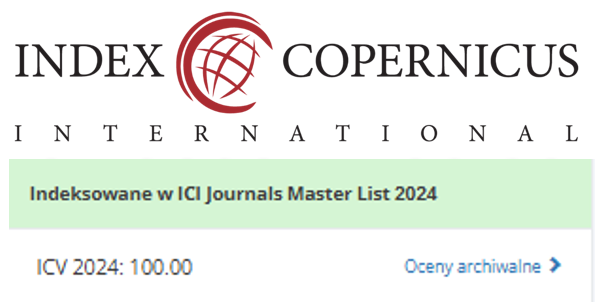Effect of the Antenatal Care Group Model on Childbirth Preparedness among Pregnant Women: A Quasi-Experimental Study
DOI:
https://doi.org/10.55018/janh.v7i3.422Keywords:
Childbirth Preparedness, Antenatal Care, Health Education, Social Support, WhatsAppAbstract
Background: Childbirth preparedness is essential to prevent complications and improve the safety of both mothers and infants. Knowledge, attitudes, and social support strongly influence maternal readiness. Group antenatal care (ANC) has been shown to enhance maternal engagement, but most studies have focused on face-to-face services. However, limited studies have examined digital ANC groups in Indonesian primary care settings. Therefore, this study aimed to analyze the effect of WhatsApp-based group ANC on maternal readiness for childbirth..
Methods: This study employed a quasi-experimental pre–post design with a control group, following the TREND reporting guideline. A total of 40 pregnant women in their second or third trimester were purposively selected. Inclusion criteria were residence in Samarang, no medical complications, and willingness to participate; exclusion criteria included refusal or diagnosed complications. The instrument was a validated childbirth preparedness questionnaire (15 items, Cronbach’s alpha = 0.87). The intervention was delivered via a WhatsApp group over two weeks (six sessions), facilitated by trained midwives using validated materials. Data were analyzed using independent t-tests after testing normality and homogeneity, with a significance level of 0.05, 95% confidence interval (CI), and effect size calculated using Cohen’s d.
Results: The mean preparedness score was higher in the experimental group (58.80 ± 5.01) compared to the control group (54.35 ± 6.43). The mean difference of 4.45 points was statistically significant (p < 0.001; 95% CI [2.1–6.7]) with a moderate-to-large effect size (Cohen’s d = 0.78). These findings indicate that WhatsApp-based ANC groups significantly improved maternal knowledge and childbirth preparedness..
Conclusion: WhatsApp-based group ANC effectively enhances maternal childbirth preparedness and is feasible for implementation as a maternal health education strategy in primary care settings.
Downloads
References
American Pregnancy Association. (2021). What is dilation in pregnancy? Retrieved August 28, 2025, from https://americanpregnancy.org/healthy-pregnancy/labor-and-birth/what-is-dilation-in-pregnancy/
Badan Pusat Statistik. (2021). Distribusi persentase wanita berumur 15–49 tahun yang pernah kawin dan melahirkan hidup dalam dua tahun terakhir menurut penolong persalinan menurut provinsi, 2020. BPS. https://www.bps.go.id/id/
Cohen, W. R., & Friedman, E. A. (2023). The latent phase of labor. American Journal of Obstetrics and Gynecology, 228(5, Suppl), S1017–S1024. https://doi.org/10.1016/j.ajog.2022.04.029
Evareny, L., Lubis, K. R., & Rahmi, L. (2022). Dukungan keluarga dan kesiapan ibu dengan tingkat kecemasan ibu hamil menjelang persalinan. Menara Medika, 4(2), 76–84. https://doi.org/10.31869/mm.v4i2.3156
Gami, E. A., Safitri, A., Alifia, A., & Rosadi, R. (2025). Pemanfaatan platform media sosial WhatsApp sebagai media pembelajaran abad 21. Jurnal Ilmu Pendidikan, 1(1). https://journal.al-aarif.com/index.php/jurnalilmupendidikan/article/view/33
Ginting, A. S. B. (2024). Faktor-faktor yang mempengaruhi kejadian post partum blues di TPMB I tahun 2024. Journal of Midwifery, 12(2), 280–285. https://jurnal.unived.ac.id/index.php/JM/article/view/7339/5126
Groos, J., Walter, A., Wittek, A., & others. (2024). Shaping ultrasound in midwifery: Towards an evidence-based training framework for enhanced prenatal care. Archives of Gynecology and Obstetrics, 310, 23–43. https://doi.org/10.1007/s00404-024-07558-3
Gusmadewi, G., Dielsa, M. F., & Reflianto, R. (2022). Pengaruh antenatal care, tingkat kecemasan, kehamilan beresiko dan jenis persalinan terhadap kesiapan fisiologis persalinan. Jurnal Kesehatan Masyarakat (J-KESMAS), 8(1), 34–48. http://dx.doi.org/10.35329/jkesmas.v7i1
Hasan, A. F. (2018). The role of emojis and emoticons in enhancing interpersonal communication through Messenger and WhatsApp applications. Adab Al-Kufa, 2(37). https://journal.uokufa.edu.iq/index.php/kufa_arts/article/download/709/652
Hu, W., Hu, H., Zhao, W., & et al. (2021). Current status of antenatal care of pregnant women—8 provinces in China, 2018. BMC Public Health, 21, 1135. https://doi.org/10.1186/s12889-021-11154-4
Jannah, A., & Qomariyah, K. (2024). Penyuluhan Tanda-Tanda Bahaya Persalinan Pada Ibu Hamil Trimester Iii Di Desa Nyalabuh Laok. Pedamas (Pengabdian Kepada Masyarakat), 2(06), 1751–1754. Retrieved from https://pekatpkm.my.id/index.php/JP/article/view/504
Jusmawati, J., & Hasrida, H. (2024). Education on labor preperation for pregnant women and their families/ support person. Journal of Evidence-Based Community Health, 1(1), 29-34. https://doi.org/10.1234/ng1e0w63
Khairunisa, D., Nurvembrianty, I., Sarinida, M. (2022). Pendidikan Kesehatantentang Perawatan Selama Kehamilan Dan Persiapan Persalinanselama Masa Pandemi Covid-19. Jurnal Inovasi & Terapan Pengabdian Masyarakat. 2(1), 23-29. https://doi.org/10.35721/jitpemas.v2i1.51
Kukula, V. A., Awini, E., Ghosh, B., Oppong, F. B., Boamah-Kaali, E., Engmann, C., … Owusu-Agyei, S. (2024). Effect of group antenatal care versus individualized antenatal care on birth preparedness and complication readiness: A cluster randomized controlled study among pregnant women in Eastern Region of Ghana. BMC Pregnancy and Childbirth, 24, 546. https://doi.org/10.1186/s12884-024-06743-1
Kundu, R. N., Borah, J., Chatterjee, A., Mukherjee, K., Bharati, S., Hossain, M. G., & Bharati, P. (2025). Short birth spacing and its impact on maternal and child health in India with urban-rural variation: An epidemiological study using the National Family Health Survey data. PLOS ONE, 20(6), e0325461. https://doi.org/10.1371/journal.pone.0325461
Lestari, H. E. P. (2021). Kala I persalinan (pembukaan). Info Bidan. Retrieved August 28, 2025, from https://www.informasibidan.com/2021/08/kala-i-persalinan-pemmbukaan.html
Malawat, R., Lestaluhu, V., & Laisouw, M. (2023). Faktor-faktor yang mempengaruhi ibu hamil dalam memilih penolong persalinan. Jurnal Kebidanan (JBd), 3(1), 58–64. https://www.jurnalpoltekkesmaluku.com/index.php/JBD/article/view/457/171
Mamabear. (2023). 5 cara mengembalikan posisi bayi sungsang ke posisi normal. Retrieved August 28, 2025, from https://mamabear.co.id/bayi-sungsang/
McCauley, H., Lowe, K., Furtado, N., Mangiaterra, V., & van den Broek, N. (2021). What are the essential components of antenatal care? A systematic review of the literature and development of signal functions to guide monitoring and evaluation. BJOG: An International Journal of Obstetrics & Gynaecology, 129(4), 465–475. https://doi.org/10.1111/1471-0528.17029
Ningsih, E. S., Iktiarinawati, F., & Asbanu, D. I. (2023). Pelatihan pengenalan dan penanganan tanda-tanda bahaya kehamilan pada ibu hamil dalam upaya menurunkan kasus kematian ibu di Puskesmas Turi. JABB: Jurnal Aplikasi Bisnis dan Bisnis Digital, 4(2), 1430–1436. https://doi.org/10.46306/jabb.v4i2.721
Putri , N. R., Amalia, R., Kusmawati, I.I. (2022) Kelas Ibu Hamil Terhadap Kesehatan Psikologis Ibu Hamil dan Persiapan Persalinan: Systematic Review, Indonesian Journal of Midwifery (IJM). 5(1). : http://jurnal.unw.ac.id:1254/index.php/ijm/issue/view/125
Rahmandiani, R. D., Astuti, S., Susanti, A. I., Handayani, D. S., & Didah. (2019). Hubungan pengetahuan ibu balita tentang stunting dengan karakteristik ibu dan sumber informasi di Desa Hegarmanah Kecamatan Jatinangor Kabupaten Sumedang. JSK, 5(2), 74–80. https://doi.org/10.24198/jsk.v5i2.25661
Rathbone, A. P., Norris, R., Parker, P., Lindsley, A., Robinson, A., Baqir, W., & Husband, A. (2020). Exploring the use of WhatsApp in out-of-hours pharmacy services: A multi-site qualitative study. Research in Social and Administrative Pharmacy, 16(4), 503–510. https://doi.org/10.1016/j.sapharm.2019.06.019
Satriawati, A. C., Aulia, A., Kurnia Sari, P., & Widi Andrian, M. (2023). Literature study: Risk factors for post partum blues. Journal of Health Science (Jurnal Ilmu Kesehatan), 8(1). https://doi.org/10.24929/jik.v8i1.2495
Sulistianingsih, A., & Hasyim, D. I. (2021). Pengaruh edukasi persalinan via WhatsApp group terhadap pengetahuan ibu hamil menghadapi persalinan di Kabupaten Pringsewu. Jurnal Ilmiah Kesehatan, 10(2), 85–94. https://doi.org/10.52657/jik.v10i2.1472
Sunarmi, A., Haksari, E. L., & Fitriahadi, E. (2022). Childbirth counseling by WhatsApp group to reduce the anxiety of primigravida. International Journal of Health & Medical Sciences, 5(3), 193–200. https://doi.org/10.21744/ijhms.v5n3.1905
Wahyuni, I., Nugraheny, E., & Kristiarini, K. J., (2025). Scoping Review: Manfaat Keikutsertaan Suami Dalam Kelas Ante Natal Care Selama Masa Kehamilan Dan Persalinan Ibu. Al-Insyirah Midwifery: Jurnal Ilmu Kebidanan (Journal of Midwifery Sciences), 14(1), 89-103. https://doi.org/10.35328/kebidanan.v14i1.2853
Yuriati, P., & Khoiriyah, E. (2021). Persalinan nyaman dengan teknik Rebozo. Jurnal Ilmu Keperawatan dan Kebidanan, 12(2), 287–291. https://doi.org/10.26751/jikk.v12i2.1052
Downloads
Published
How to Cite
Issue
Section
License
Copyright (c) 2025 Kurniawan Dewi Budiarti, Eti Sulliyawati, Sulastin Sulastin, Suci Badriyah

This work is licensed under a Creative Commons Attribution-ShareAlike 4.0 International License.


















